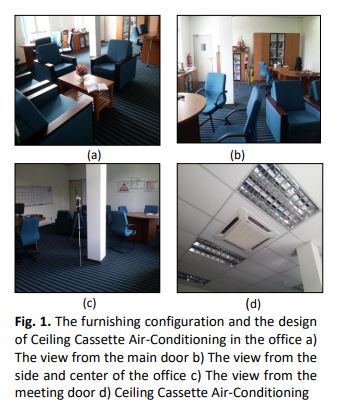An Experimental Study of Indoor Air Pollution in New Office Building
DOI:
https://doi.org/10.37934/arfmts.94.1.120128Keywords:
Carbon Dioxide, Indoor Air Pollutant, Formaldehyde, Volatile Organic Compounds, Office BuildingsAbstract
Air pollution is a major environmental risk to health. The new building normally has a facing problem with indoor air pollutant. New construction materials and furniture will contribute higher contaminants compared to old materials. The effect of indoor air pollutants can result in human health problems, discomfort and reduces their productivity. The purpose of this present work is to experimental study the indoor air pollution status regarding carbon dioxide, carbon monoxide, volatile organic compounds, and formaldehyde concentration in an administration office at the new building faculty of mechanical engineering in Johor Bahru, Malaysia. The contaminants concentration values are investigated through field measurements and then compared to the limits stated in the Occupational Safety and Health Act standard. The field measurement of contaminant concentration level was conducted at the intersect plane between the vertical plane at the center of the air conditioning diffuser and the horizontal plane at 1.2 m from the floor. The contaminant concentration readings were taken at 6 locations inside the office. The data were conducted during actual working conditions. The reading of contaminants concentration is taken in 30 minutes. One minute is equal to one number of samples. It was found that only the formaldehyde concentration is exceeding the maximum limit.
Downloads
































